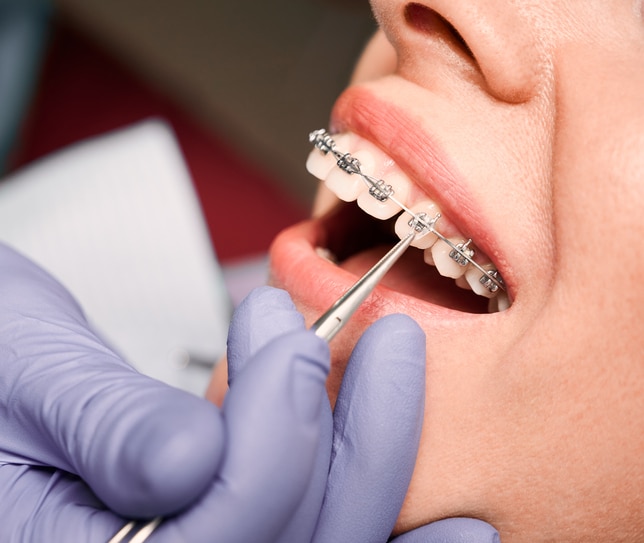Professional Cumming Braces and Aligners: What to Know Before You Check out
Wiki Article
Comprehensive Guide to Orthodontics Treatments for Remedying Dental Imbalances
Comprehending the details of each procedure, including their systems, advantages, and possible disadvantages, is essential in making informed decisions regarding one's orthodontic therapy. As we navigate with the thorough guide to orthodontic procedures for remedying dental misalignments, the elaborate information of each approach will certainly unfold, dropping light on the course towards a unified and useful dental alignment.Orthodontic Procedures Summary

In enhancement to traditional dental braces and clear aligners, orthodontists may additionally recommend various other interventions like headgear, palatal expanders, or retainers to address certain alignment problems (cumming aligners). These procedures are tailored to each patient's special demands and may include a combination of treatments to attain the desired results. Routine changes and monitoring are critical parts of orthodontic treatment to make sure progression is on track and to make any essential modifications in the process. By undertaking orthodontic procedures, clients can not only achieve a straighter grin however likewise boost their total oral wellness and feature.
Traditional Dental Braces: Just How They Function
When considering orthodontic therapies for oral imbalances, conventional dental braces stand out as a reliable method for fixing teeth placing. Typical dental braces are composed of brackets, wires, and bands that work together to apply constant stress on the teeth, slowly moving them right into the wanted placement.
One trick aspect of exactly how typical braces work is the process of bone renovation. As pressure is related to the teeth with the braces, the bone bordering the teeth is improved to sustain the brand-new tooth positions. This makeover is vital for the lasting security of the fixed placement. People will need regular adjustments at the orthodontist's office to make sure the braces continue to apply the right stress for efficient teeth motion.
Invisible Aligners: Disadvantages and pros
Undetectable aligners provide a practical and very discreet option to traditional dental braces for remedying dental imbalances. These clear, tailor-made trays are virtually unseen when used, making them an appealing alternative for individuals looking for a more cosmetically pleasing orthodontic therapy. Among the main advantages of invisible aligners is their removability, permitting simpler maintenance of dental hygiene contrasted to traditional dental braces. Patients can eliminate the aligners before eating or cleaning their teeth, reducing the danger of food obtaining stuck in the appliance and simplifying the cleaning procedure.
Surgical Orthodontic Options
Surgical treatments company website in orthodontics existing sensible options for dealing with complicated oral imbalances that may not be successfully solved via standard orthodontic therapies. While standard dental braces and invisible aligners can correct many orthodontic concerns, particular situations need medical treatment to accomplish optimal results. Surgical orthodontic alternatives are commonly advised for serious malocclusions, significant jaw inconsistencies, and situations where the what does a dentist do underlying bone structure needs alteration to accomplish appropriate placement.One typical surgical orthodontic procedure is orthognathic surgery, which entails repositioning the jaws to correct useful problems such as difficulty talking or chewing. This surgical procedure is commonly done in collaboration with an orthodontist that helps line up the teeth before and after the treatment. Surgical orthodontics may additionally entail treatments to expose influenced teeth, eliminate excess periodontal cells, or reshape the jawbone to develop a much more harmonious face profile.
Prior to considering medical orthodontic choices, people undergo a comprehensive examination to establish the requirement and potential benefits of such interventions. orthodontist. While surgery may appear daunting, it can dramatically enhance both the feature and looks of the smile in instances where conventional orthodontic treatments fail
Retainers and Post-Treatment Care

Post-treatment treatment entails complying with the orthodontist's directions carefully. This may include correct oral health practices, participating in follow-up appointments, and putting on the retainers as prescribed. Failing to comply with post-treatment treatment directions can cause regression, where the teeth progressively relocate back in the direction of their original settings. Consistent More about the author retainer wear, good dental hygiene, and routine oral check-ups are important for keeping the outcomes attained through orthodontic surgery and guaranteeing the lasting stability of the fixed oral positioning.
Conclusion
In conclusion, orthodontic procedures provide various options for remedying oral misalignments. Surgical orthodontic options are offered for much more extreme misalignments. On the whole, orthodontic procedures can efficiently boost dental health and wellness and aesthetic appearance.As we navigate through the comprehensive overview to orthodontic procedures for dealing with dental imbalances, the intricate details of each approach will certainly unravel, shedding light on the path toward a functional and harmonious dental placement. - cumming invisalign
One of the most common orthodontic treatments is the usage of braces, which are composed of metal brackets and cables that apply gentle stress to gradually shift teeth into the desired position.When thinking about orthodontic therapies for dental imbalances, conventional dental braces stand out as a tried and true approach for remedying teeth positioning. Furthermore, unnoticeable aligners might not be appropriate for complex orthodontic concerns that require more significant teeth movement, as they are commonly advised for mild to modest cases. Retainers are personalized orthodontic devices made to hold teeth in their remedied positions after the conclusion of orthodontic therapy.
Report this wiki page